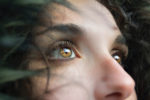To curb the risk of myopia, send your children outside to play!
By Amanda Leigh Mascarelli
Los Angeles Times article of February 13, 2011
Here’s a good reason to turn off your game consoles. For children, being active outdoors may reduce the likelihood of developing myopia. It is the cause of blurred vision in distance and for some, a major handicap.
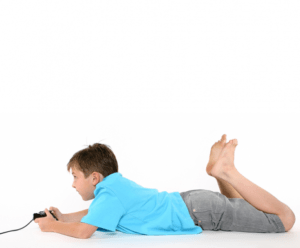
Your parents were right to tell you, “Go out and play!” says Count Smith, Dean of the College of Optometry at the University of Houston. Myopia is on the rise worldwide. A recent study of the U.S. population between the ages of 12 and 54 shows that myopia increased by 66% between 1970 and 2000. Asia has also experienced a sharp increase in the number of myopes in urban areas. “Today myopia starts at a younger age and its rate of progression is higher,” according to Thomas Aller, optometrist. Although myopia has a proven genetic component, genes alone can’t explain these increases. “It’s not just heredity, and it’s not how much time you spend outdoors, or all your work in near vision that makes you myopic or not,” says Susan Vitale, an epidemiologist at the National Eye Institute of the National Institutes of Health. “All these conditions interact together in a complex way that we still don’t understand.”
Close vision activity, such as reading or working at a computer screen, has long been considered responsible for myopia.
On the other hand, recent studies show that whether a child goes outside to play in the daylight may also play an important role.
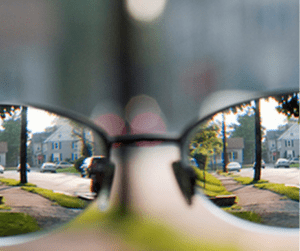
A 2008 study cited in the Journal of Ophthalmology shows that 12-year-olds who spend more than 2.8 hours outdoors on average per day are less likely to develop myopia than those who spend less, regardless of the number of hours spent in close-up vision.
On the one hand it is accepted that the eyes probably need moderate exposure to daylight, and on the other hand, this would be the time that the eyes spend in distant vision outside a home.
Numerous new treatment techniques have been developed in the hope of slowing the progression of myopia. There are specific spectacle lenses and contact lenses, new types of bifocal lenses, a specific pharmaceutical treatment and contact lenses that can be worn at night to modify the corneal curvature.  However, even with these promising technologies, there is no way to prevent myopia or even a medication to reverse the evolution. Ultimately, scientists hope that by better understanding the interaction of genetics, environmental factors and eye function, they can reduce the negative effects of myopia on vision over a lifetime. Myopia usually develops during childhood or early adolescence, often between the ages of 8 and 10, although its effects for some may not be felt until early adulthood. For others, the condition gets progressively worse over the years. And in the case of extreme myopia, structural changes in the eye combined with high myopia can lead to cataracts, glaucoma or vision loss. Myopia causes images to be focused in front of the retina rather than on it. Traditional eyeglass lenses and contact lenses correct this defect. Unfortunately, optical glasses and contact lenses have not been very successful in slowing down the elongation of the eye and preventing the progression of myopia. One possible answer for this lack of success is that traditional corrective lenses only correct image sharpness in the center of the retina and insufficiently or poorly in the periphery. It is very likely that signals from the eye’s peripheral retina are responsible for the process of eye elongation that causes myopia.
However, even with these promising technologies, there is no way to prevent myopia or even a medication to reverse the evolution. Ultimately, scientists hope that by better understanding the interaction of genetics, environmental factors and eye function, they can reduce the negative effects of myopia on vision over a lifetime. Myopia usually develops during childhood or early adolescence, often between the ages of 8 and 10, although its effects for some may not be felt until early adulthood. For others, the condition gets progressively worse over the years. And in the case of extreme myopia, structural changes in the eye combined with high myopia can lead to cataracts, glaucoma or vision loss. Myopia causes images to be focused in front of the retina rather than on it. Traditional eyeglass lenses and contact lenses correct this defect. Unfortunately, optical glasses and contact lenses have not been very successful in slowing down the elongation of the eye and preventing the progression of myopia. One possible answer for this lack of success is that traditional corrective lenses only correct image sharpness in the center of the retina and insufficiently or poorly in the periphery. It is very likely that signals from the eye’s peripheral retina are responsible for the process of eye elongation that causes myopia. 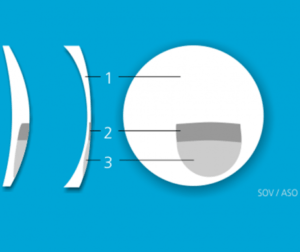 Spectacle lenses and bifocal contact lenses have been shown to slow the progression of myopia in some children. A recent study shows that children wearing executive bifocal lenses had a 58% reduction in myopia progression compared to those wearing single vision lenses. Even standard bifocal lenses succeed in slowing down the progression of myopia by 38%. Bifocal lenses are particularly effective for children with strabismus or convergence deficits. Studies have shown that progressive contact lenses are more effective than bifocal lenses. However, it is not clear whether the advantage of progressive contact lenses is due to their effect on the periphery or on central vision, or both. Orthokeratology is another way to treat myopia. Contact lenses made of rigid oxygen-permeable material are used, which, when worn at night, change the curvature of the cornea. Contact lenses are removed for the day. The effect eliminates myopia during the day. Studies have shown that corneal remodeling slows the rate of myopia progression by about half. Although there are not yet enough studies on the effects of orthokeratology, they do show very positive effects, according to Christine Wildsoet, a myopia expert at UC Berkeley. There is no valid medication for the treatment of myopia. However, atropine administered in drops, has the ability to slow the progression of myopia. This treatment involves undesirable side effects, including pupil dilation and lack of accommodation. The eye is also at high risk from exposure to strong light. Researchers don’t yet know what the long-term effects of atropine will be; some studies suggest that myopia may increase sharply after treatment is stopped.
Spectacle lenses and bifocal contact lenses have been shown to slow the progression of myopia in some children. A recent study shows that children wearing executive bifocal lenses had a 58% reduction in myopia progression compared to those wearing single vision lenses. Even standard bifocal lenses succeed in slowing down the progression of myopia by 38%. Bifocal lenses are particularly effective for children with strabismus or convergence deficits. Studies have shown that progressive contact lenses are more effective than bifocal lenses. However, it is not clear whether the advantage of progressive contact lenses is due to their effect on the periphery or on central vision, or both. Orthokeratology is another way to treat myopia. Contact lenses made of rigid oxygen-permeable material are used, which, when worn at night, change the curvature of the cornea. Contact lenses are removed for the day. The effect eliminates myopia during the day. Studies have shown that corneal remodeling slows the rate of myopia progression by about half. Although there are not yet enough studies on the effects of orthokeratology, they do show very positive effects, according to Christine Wildsoet, a myopia expert at UC Berkeley. There is no valid medication for the treatment of myopia. However, atropine administered in drops, has the ability to slow the progression of myopia. This treatment involves undesirable side effects, including pupil dilation and lack of accommodation. The eye is also at high risk from exposure to strong light. Researchers don’t yet know what the long-term effects of atropine will be; some studies suggest that myopia may increase sharply after treatment is stopped. 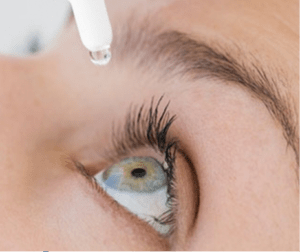 Holden adds that future therapies for myopia will probably involve a combination of strategies. He thinks it might be a combination of “go out and play”, a very low dose of eye drops to slow the progress of myopia, combined with the use of anti myopia glasses or contact lenses. It is probably the multipack that will finally give the desired effect. In the meantime, most experts agree with the low-tech solution: let them go out and play!
Holden adds that future therapies for myopia will probably involve a combination of strategies. He thinks it might be a combination of “go out and play”, a very low dose of eye drops to slow the progress of myopia, combined with the use of anti myopia glasses or contact lenses. It is probably the multipack that will finally give the desired effect. In the meantime, most experts agree with the low-tech solution: let them go out and play!



